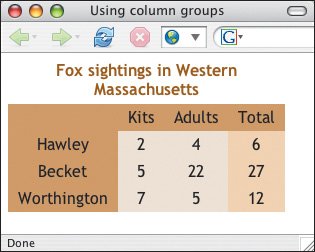Dividing the Table into Horizontal Sections
| You can also mark a horizontal section of your tableone or more rowsand then format it all at once. You'll also be able to draw dividing lines between sections, instead of between individual rows (see page 249). Figure 16.55. Once the first row is in a thead section, I can define a class of styles for it which will be applied to each cell in the thead. To divide the table into horizontal sections:
|
EAN: 2147483647
Pages: 340



 Tips
Tips